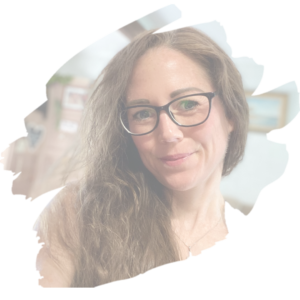Contents of Article
- 1 An Introduction: Co-dependancy & Enmeshment
- 2 Co-dependence as a pattern of protection
- 3 Enmeshment as an emergent state
- 4 Self-Awareness & Attunement with Compassion
- 5 References & Resources
We being life, as babies, needing connection for survival, and we take adaptations we’ve learned from those attachment experiences out into the world of interpersonal relationships.
Learning to be a “we” in our personal family of origin may directly impact our experience of widening our lens of identity to embrace a larger set of relational connections – belonging to others in romance, friendship, community, and the world of nature.
We come from the inner Me, as a body-based identity, and then connect to other individuals in our social relationships as We.
Dr Dan Siegel
An Introduction: Co-dependancy & Enmeshment
Have you ever heard or used the words enmeshed or co-dependent as they relate to your relationships? Perhaps you saw something on social media and felt like it fit for you and/or your family of origin? Or perhaps you know that these two terms are linked with concepts of boundaries, communication, capacity to trust, relational responsibilities and accountabilities, self-esteem and self-efficacy, fears of rejection/abandonment and aloneness, and/or emotional fusion – yet, perhaps there has been an unclear and confused understanding to exactly what the difference between these two are and how they might relate?
Whilst definitions and understandings of these two notions can be blurred as they are often used interchangeably, I do think it is important to ground these concepts individually.

At the same time, due to their multifaceted meaning, this grounding can be done with a sense of integration – as in, to differentiate and link these two concepts as they interact and impact on each other. Indeed! Both enmeshment and co-dependency are forms of interpersonal dynamics that can affect our sense of Self in relationship.
With this in mind I would like to explore a new way of making sense of these terms as they relate to experiences within development and the fulfilment of our innate emotional-motivational (attachment) needs for connection, protection, autonomy, and belonging with communicative meaning-making.
This includes a perspective of enmeshment as an internally located experience of Self/Other fusion emerging from a certain developmental dynamic, and co-dependence as an externally located form of protection-based attachment and needs fulfilment. Such that can only be broken by a growing sense of Self with awareness, attunement, and compassion.
Co-dependence as a pattern of protection
Co-dependence can be viewed as a pattern of protection that reflects an outward manifestation of enmeshment. This outward manifestation may be a form of feigning (or fawning) within relationships wherein – to fulfil one’s innate attachment needs – one learned to sacrifice one’s authentic sense of Self.

As a pattern of protection, co-dependent actions are that which may appear as a preoccupation with, an over-reliance on, as well as efforts toward, conforming to the needs of the Other. Interpersonally, when one enacts patterns of co-dependence there is a perpetual imbalance of care-giving and care-receiving, closeness and distance, as well as an undifferentiated sense of Self-worth as it correlates to individuated responsibility and accountability.
Generally speaking, within this imbalanced interpersonal dynamic there is an established power differential and alliance where one takes on a role of ongoing giving which, although facilitating an external framework to build and obtain a sense of Self-worth, enables the Other’s reliance on care-receiving. This reliance thus engendering a cyclical dynamic of dependence whereby the care-receiver’s innate attachment needs are fulfilled, and the care-givers attachment needs remain met through actions of self-sacrifice, self-abasement, and self-subjugation.
It is important to remember that patterns of protection that are expressed through actions of co-dependence are indeed manifestations of enmeshment and an absent sense of Self that developed from an environment of diffuse boundaries, emotional fusion, and an incomplete process of separation-individuation.
Enmeshment as an emergent state
Enmeshment can be viewed as emerging from a developmental dynamic within which there is a blurring between Self/Other separateness. Such blurring is created by an absence of physical, psychological, and/or relational availability and attunement toward the vulnerably dependent Self of a child. Whilst such absence may arise from a spectrum of environmental situations that range anywhere from under-protection to over-protection, the crucial component is that there is a distinct lack in the cultivation of the developing Self’s sense of autonomy and agency alongside belonging with communicative meaning-making. There is a negation of the developmental need for acceptance with uniqueness and unity.
Further to this, the negation of these developmental needs creates a reversed power-differential of needs fulfilment. Meaning, the primary caregivers needs and/or demands take precedence over the needs of the child and the child misses the opportunity to develop a sense of Self based in knowing, understanding, and valuing one’s own thoughts, feelings, and needs. This missed opportunity thus leaving the child to manifest various non-conscious patterns of protection directed toward attending and garnering approval-based responsiveness from the primary caregiver.
 In absence of the child’s sense of Self developing in uniqueness and unity, attending and garnering becomes symbolised as an identity – there has been no space for the Self to know a sense of safe separateness with agency and autonomy, thus without attending and garnering to the needs of Others, there lies an embodied emptiness and a floundering sense of direction.
In absence of the child’s sense of Self developing in uniqueness and unity, attending and garnering becomes symbolised as an identity – there has been no space for the Self to know a sense of safe separateness with agency and autonomy, thus without attending and garnering to the needs of Others, there lies an embodied emptiness and a floundering sense of direction.
Correspondingly, due to the embodied nature of the developing child’s sense of Self, this primary absence of physical, psychological, and/or relational availability, attunement, and attention often unfolds throughout the lifespan as an ongoing sense of confusion and fusion between the Self and the Other. This confusion and fusion, as aforementioned outwardly manifesting as interpersonal patterns co-dependence.
With this in mind it can be easy to see how enmeshment, as an internally located experience of Self/Other fusion, leads to the externally located forms of protection-based attachment and needs fulfilment of co-dependence, and why grounding a sense of Self with awareness, attunement, and compassion is vital in moving toward a life filled with uniqueness and unity.
Self-Awareness & Attunement with Compassion
 It is important to remember that such interpersonal patterns of protection originated as a form of needs fulfilment or survival thus often hold deeply embodied fears of rejection and abandonment, as well as self-abasing shame and guilt. Meaning, when seeking to break away from the cyclic nature of enmeshment and co-dependent actions one must initially cultivate a sense of Self knowledge with compassionate care before bringing awareness and attunement to the various internal meanings and external ways of coping (patterns of protection) that emerged.
It is important to remember that such interpersonal patterns of protection originated as a form of needs fulfilment or survival thus often hold deeply embodied fears of rejection and abandonment, as well as self-abasing shame and guilt. Meaning, when seeking to break away from the cyclic nature of enmeshment and co-dependent actions one must initially cultivate a sense of Self knowledge with compassionate care before bringing awareness and attunement to the various internal meanings and external ways of coping (patterns of protection) that emerged.
Through primarily reconnecting to a sense of Self with value and worth alongside a grounded awareness of one’s unique thoughts, feelings, and needs, one can begin to nurture the emerging grief from that which was lost throughout development whilst also noticing the present ways in which co-dependant actions and a sense enmeshment shows up in relationships.
Such may look like noticing and bringing awareness upon interpersonal interactions wherein any excessive sense of hesitation is flooded with guilt and fear, or wherein any form of preoccupation and an inclination toward self-sacrifice, self-abasement, and self-subjugation occurs. With awareness one can begin to compassionately begin to consider Self and slowly cultivate boundaried balance within interpersonal interactions.
More practically, this may look like:
- Spending time with Self in valuing and understanding one’s internal sense of being – The Value in Emotional Processing
- Breaking free from false guilt – Helpful (true) Guilt & Unhelpful (false) Guilt
- Discovering your authentic sense of Self
- Learning new forms of communicating with Others
- Connecting with Others who reflect and embrace your uniqueness with unity.
 Welcome, my name is Chele, I am a therapist primarily specialising in Trauma & Burnout. As a psychotherapist & PACFA registered Counsellor I work individually with beautiful humans such as yourself who feel alone, lost, confused, & overwhelmed; those of you who are longing for something different.
Welcome, my name is Chele, I am a therapist primarily specialising in Trauma & Burnout. As a psychotherapist & PACFA registered Counsellor I work individually with beautiful humans such as yourself who feel alone, lost, confused, & overwhelmed; those of you who are longing for something different.
As such, I offer my knowledge, skills, and inherent gifts with ears that listen to hear, and a heart open to receive who you are, no matter the suffering you bring; to support you in an exploration of how your past has impacted you and the ways that shows up presently. Together we will rediscover your hope and your sense of Self; we will reconnect you to what matters reclaiming the joy and delight in life you so deserve.
I welcome you to view my services or connect with me to explore how I can assist you in your journey.
References & Resources
Co-dependency and Enmeshment — a Fusion of Concepts https://link.springer.com/article/10.1007/s11469-022-00810-4
Enmeshment: What to Do When Boundaries Are Blurry in a Relationship
https://www.bannerhealth.com/healthcareblog/teach-me/enmeshment-what-to-do-when-boundaries-are-blurry-in-a-relationship
The Ultimate Guide to Early Maladaptive Schemas
https://www.attachmentproject.com/blog/early-maladaptive-schemas/
Toxic Family Dynamic 4: Enmeshment
https://eggshelltherapy.com/sensitivity-and-childhood-trauma/#Toxic_Family_Dynamic_4_Enmeshment

